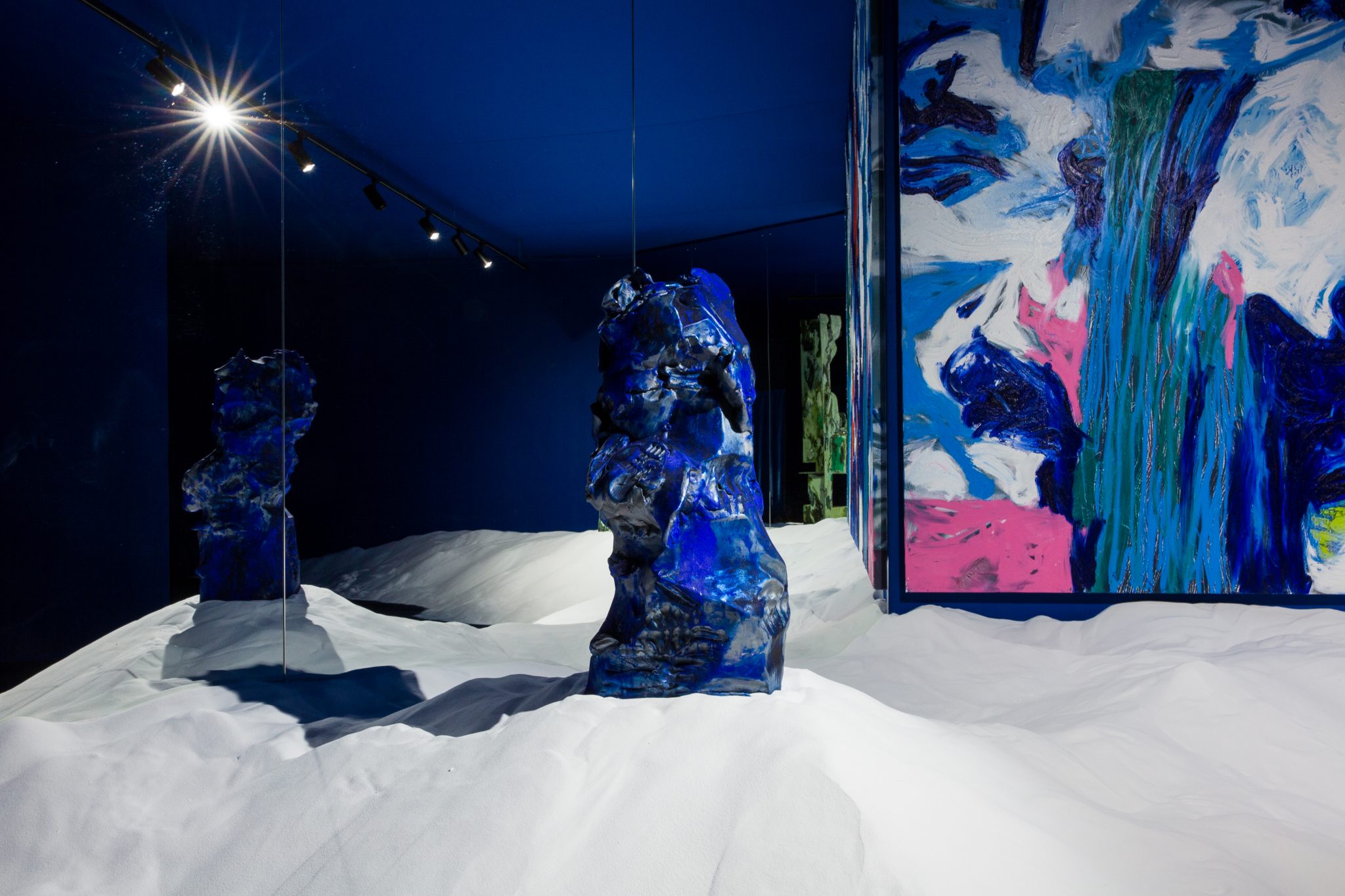Multimedia and anthropomorphic sculptures at Arnolfini, Bristol, bridge the gap between the viewer and the Bolivian-American artist
Donna Huanca’s site-specific multimedia installation CUEVA DE COPAL (‘Copal Cave’ in Spanish) welcomes visitors coming in from the luminous space of Bristol’s Floating Harbour in a penumbral embrace. A heavy, electric-blue strip curtain separates the installation site from the busier corners of the ground floor at Arnolfini, activating sensorial and tactile responses from the body right on the exhibition’s threshold.
Inside, a narrow corridor leads viewers towards an expanse of bone-white sand that reveals the triangular shape of the room. Four monumental oil-and-sand paintings – CUEVA DE COPAL #1–4 (all works 2021) – are hung at the farthest end from the entrance and act as the installation’s focal point, while a concoction of stimulations both aural (the entire space vibrates with sounds of sloshing water, rustling wind and chirping birds, creating a hypnotising soundscape) and olfactory (Huanca’s self-made ligneous aroma permeates the space, referencing scents used in spiritual-cleansing rituals of native Central and South American cultures) envelop the audience.

CUEVA DE COPAL, 2022 (installation view). Photo: Lisa Whiting Photography. Courtesy Arnolfini, Bristol
Previous installations by the Bolivian-American artist incorporated live performances in which the painted, naked bodies of Huanca’s models became textured canvases. However, in these pandemic times, those body paintings have been made behind the closed doors of Huanca’s studio. Photographic traces of the models’ presence can still be found in CUEVA DE COPAL, hidden beneath layers of natural pigments in the paintings, forming a celluloid palimpsest over which organic materials create rapturous combinations of colours.
Two anthropomorphic sculptures inhabit the space – Vipassana Journal (Ripped Torso, 2021) and Arbol de Sapito (Sapito Tree, 2021). Similar sculptures are recurrent elements in Huanca’s shows, which the artist describes in the exhibition guide as ‘stand-ins for the body […] acting both as camouflage and shelter for performers and audience members’. These relationships between the sculptures and the physical bodies are further accentuated by two large mirrors placed behind them, which are reminiscent of the two-way mirrors built into the walls of the studio Huanca occupied at Malmö’s Konsthalle for her six-week performance RAW MATERIAL in 2013. There, it was Huanca who was scrutinised by the audience. Here, in the absence of other performers, we are at once observers and observed. For a transient moment, we are passersby invited to not only look upon but also within ourselves.
